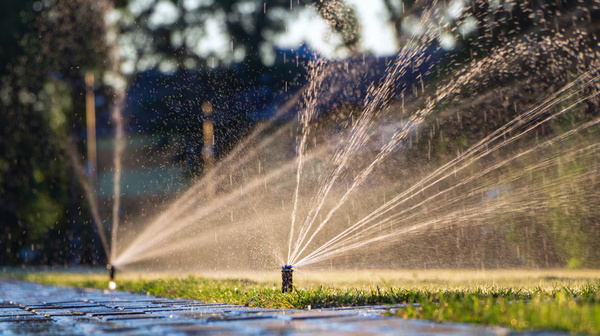
Irrigate Appropriately for Fall
Turfgrass needs vary throughout the year, and the transition from summer to fall brings a change in your lawn’s irrigation requirements. A water-wise homeowner will provide the right amount of irrigation so their lawn can thrive all year long.
Lawns need less water as the temperatures get cooler, but there aren’t daily summer rains to count on, either. Homeowners who live in a community that takes care of landscaping and lawn care won’t need to worry about fall irrigation, but those who don’t should educate themselves before their lawns begin to suffer.
This article covers how to meet the watering needs of your lawn in the fall.
What Are Basic Watering Guidelines?
Here’s the quick answer: ¾ inch, twice a week.
If you’re not in a position to put any time into determining your lawn’s specific needs, this guideline will serve you well temporarily. However, it won’t be sufficient as a year-round, Florida-wide irrigation plan.
So, let’s break down this guideline and provide more important details, including when it won’t serve you best.
How Much Should You Water?
Regardless of season, your sprinklers should deliver the same amount of water every time they’re on. So, on a Sunday morning in December, your sprinklers should run for the same amount of time as a Sunday morning in mid-July.
Irrigating your lawn is about getting water to the root zone, not just misting the grass blades, and an insufficient amount of water just won’t do the trick. Three fourths of an inch is just the right amount of water to hydrate the root zone without over-watering, which wastes resources and can lead to rot, disease, and eventually death of your turfgrass.
Set shallow cans out in several places around the yard (tuna cans work great), turn on the sprinkler system, and time how long it takes to fill each can to ¾ inch. Now program the irrigation system to run for that many minutes each time it comes on.
How Often Does Your Lawn Need Water?
This answer varies based on several factors, including where in Florida you live, time of year, turfgrass species, soil type, and amount of shade present.
The University of Florida IFAS Extension recommends looking for signs your grass is thirsty before irrigating. Look for blades closed in half, blue-gray grass, and imprints that remain after a footstep or tire roll. Only when you notice these signs should you irrigate. This will require regularly checking on the turfgrass, but it will save time and money to give your lawn the care it needs.
So, yes, twice a week is a general rule of thumb, but the prudent homeowner will research their specific requirements. For example, St. Augustine grass in south Florida can go 1-4 weeks between waterings during winter, but a central Florida lawn of the same type will need irrigation every 1-5 days in the summertime.
What’s the Best Time of Day to Water?
You might have heard that watering in the middle of the night results in less evaporation and is better for the lawn. That’s true . . . and false. Less water is lost to evaporation, but excess moisture can create a host of other problems, including fungal growth. Irrigating at midday will result in too much evaporation, so the sweet spot is between 5:00 am and 10:00 am.